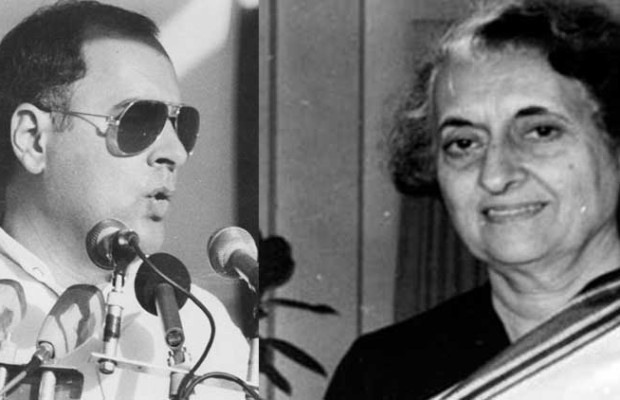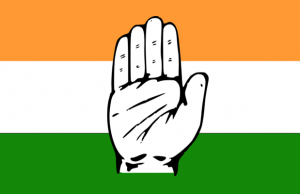POLITICS OF STAMPS

Our “revolutionary” Prime Minister Narendra Modi has done another “revolution” in his 15 months rule. He has discontinued the series of postage stamps on Indira Gandhi and Rajiv Gandhi. No matter, Indira Gandhi changed the geography of our sub-continent, fought against terrorism and paid with her life. It is also not important that Rajiv Gandhi left no stone unturned to make India a strong regional super-power, fought for a new world order and sacrificed his life for the country. For the Bhartiya Janta Party (BJP) Government in Centre, Indira and Rajiv were only the members of a family and not the Prime Ministers of this great nation who played their role in inclusive development and strengthening the social fabric of India. A loudmouth Minster of Modi-government told the people of world’s largest democracy that all the honour cannot be given to one family only.
And, what was the honour to Indira Gandhi and Rajiv Gandhi that had been given? The release of postage stamps in their memory in recognition of their services rendered to the nation. So, Modi government has decided to take this honour back by discontinuation of these stamps and believes that the next generation will forget Indira and Rajiv if their faces are not seen on the postal stamps in the years to come. In observing and participating in politics one sees a lot of meanness. But this is for the first time in the democratic history of our country when we are witnessing such a low level of public behaviour. Gone are the days of large-hearted stalwarts, who in spite of their political differences, had the courtesy of respecting each other in public life. Envy is the religion of the mediocre. It comforts them, it soothes their worries, and finally it rots their souls, allowing them to justify their meanness and their greed until they believe these to be virtues. Such people are convinced that the doors of heaven will be opened only to poor wretches like themselves who go through life with attempts to belittle others.
Since India got Independence, 2243 postal stamps have been released till December 31, 2014. Out of these, around 175 are definitive series stamps. There are two types of postage stamps issued—commemorative and definitive. The Commemorative stamps are released once and definitive stamps are released for daily use. That means there are hundreds of other personalities, events and objects who have been given this honour which Indira Gandhi and Rajiv Gandhi were part of. But only these two are now getting a special honour of delisting by the right wing government directly controlled by BJP’s mother-organisation Rashtriya Swayam Sewak Sangh (RSS).
Definitive stamps on Jawaharlal Nehru, Indira Gandhi and Rajiv Gandhi were issued in 2008 with the stamps on Mahatma Gandhi, Baba Saheb Ambedker, Satyajit Ray, Homi Bhabha, JRD Tata, and Mother Teresa. Long before this, special definitive stamps had been released on Vallabh Bhai Patel in 2000 and on Subhash Chandra Bose and Ambedker in 2001. During the regime of different Congress governments in Centre the list of stamps released include the names of Vinayak Damodar Sawarkar (1970), Jaiprakash Narayan (1980), Chhatrapati Shivaji (1961), Dayanand Sarswati (1962), Vallabh Bhai Patel (1965), Lal Bahadur Shastri (1966), and Morarji Desai (1996).
Modi Government wants the nation to believe that “all the honour was given to one family” and does not want to reveal the fact that in Independent India, stamps have been released on Kasturba Gandhi, Sister Nivedita, Bal Gangadhar Tilak, Dadabhai Nauroji, Vinoba Bhave, Abdul Gaffar Khan, Bhikaji Cama, Aruna Asaf Ali, Ram Manohar Lohia, Deen Dayal Upadhyaya, Shyama Prasad Mukharjee, K.B. Hedgewar, N.T. Ramarao, Karpoori Thakur, Chowdhary Charan Singh, Aurbindo, Swami Shradhanand, Shankaracharya, and Satya Sai Baba. Several prominent literary figures, artists, musicians, scientists and social reformers have also got the honour of having stamps in their memory. Events such as Jaliawala Bagh, Dandi March, and Man on Moon have also been a part of stamp releases all these years. Plants like Tulsi and Ashwagandha, and all the astrological signs also have stamps on them. Historical buildings and institutions of repute have also found a place in the list of postage stamps.
The Indian Philatelic history began with the introduction of paper postage in India in 1852. Before that copper tokens were introduced for payment of postage in 1774. Their use was, however, not found to be very convenient and need was felt for some other token of pre-payment. With the success of Penny Postage in England, Sir Bartel Frere, the Commissioner of Sind introduced paper stamps for his province in 1852. These stamps, known as Scinde Dawk, were round in shape and were issued in three variations – embossed on white paper without colour, on white paper in blue and on vermilion wafers. They were withdrawn in October, 1854 on the introduction of the regular India Postage Stamps though their use continued for quite some time.
In 1854, it was decided to issue stamps for the British India. The first design for the India Postage stamps was attempted by Col. Forbes of Calcutta Mint showing the “Lion and the Palm tree”. It was a bold and imaginative design but somehow it could never be used. The next stamps to be designed and printed in 1854, by the Surveyor General’s Office were blue lithographed half anna stamps showing a youthful profile of Queen Victoria. The first India Postage Stamps bore the inscription “India Postage”. It was changed in the same year to “East India Postage”. In 1882, this inscription was amended to “India Postage” and continued till 1962. From November, 1962, a new caption “INDIA” was introduced replacing the “India Postage”. Three stamps were issued in the first series in 1947. They depicted the Ashoka Pillar, National Emblem of India; the Indian National Flag and an Aircraft.
It is uncalled for any responsible and sensible government to make an effort to politicise the process of postage stamps release as the governments so far have been implementing a fair and inclusive procedure. Deliberately creating a perception that only one family was being honoured is mischievous. Any government must try to be free of prejudice, meanness of spirit, pettiness, and hatred. True, mean boys go far in high school but we must also remember that kind men go far in life. Narendra Bhai, do you really think it necessary to stoop to such levels in your political journey?




You must be logged in to post a comment Login